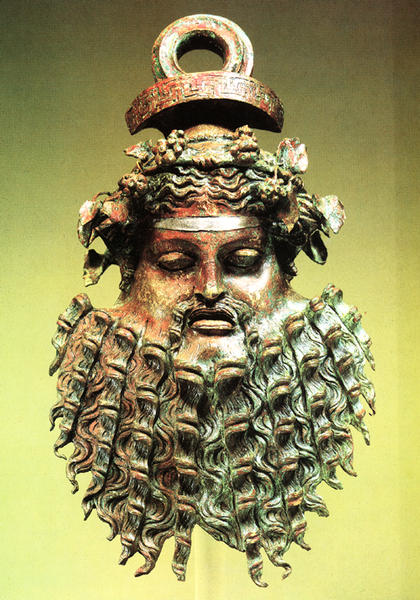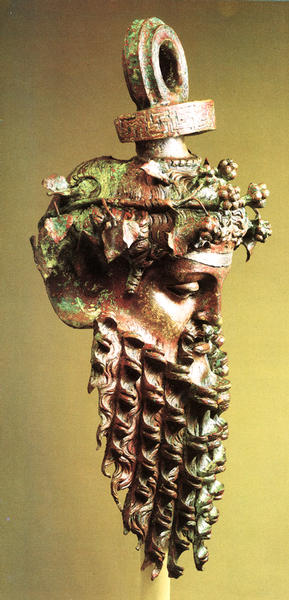Handle of a Situra-Silenos Mask
- First haif of the 1st century A.D.
- 1c
- Bronze, silver, copper
- H-30.5
- Gift of Mrs. Gerald van Kemp, 1958
Catalogue Entry
For all the change and innovation in Hellenistic iconography, there was also continuity. These three masks demonstrate the tendency to perpetuate, if not to revive, styles going back to the Classic and to even the Archaic period, a tendency that gained impetus from the 2nd century on as Greek artists were being called upon to cater to the tastes of their Roman conquerors.
The mask belong to a group of eight known examples. They were originally used in pairs on opposite sides of bucket-shaped vessels called stulae to accommodate the carrying handle, its ends would have passed through the rings that are preserved on this piece. The subject can be interpreted as either Dionysos or a Silenos, depending on whether one considers the ear predominantly human or equine; the latter form seems more pronounced.
The existence of numerous versions suggests that the source of inspiration lay in a model now lost, that has been attributed to an artist of the 3rd century B.C. in Egypt, possibly Alexandria. The process of reduplication allowed variation, as our examples illustrate. In the other example, the horizontal element below the ring is decorated with running spirals, while this has a swastika meander. This mask also shows the finest execution of the beard, hair, and wreath, which is made of ivy leaves and berries attached by long stems to a circle. The production of a decorative adjunct in "multiples" can be traced back to the Archaic period with its predilection for griffins; so also can the use of inlays for effects of color and realism.
This mask, however, conveys something brilliant decoration achieved during the late period; both the meander ornament and the fillet have silver inlays, while the lips preserve some traces of copper.

